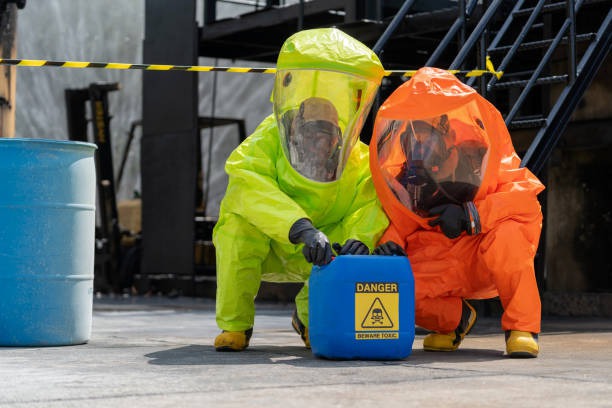Biohazard cleanup is a crucial task that involves removing potentially hazardous materials, such as blood, bodily fluids, and chemicals, which can pose significant health risks. Whether it’s a crime scene, a medical facility, or an industrial site, ensuring safety in biohazard cleanup requires knowledge, training, and a rigorous approach.
Importance of Proper Cleanup
Taking biohazard cleanup seriously is essential. When such hazards are not properly managed:
-
Health risks can escalate.
-
Environmental contamination can occur.
-
Legal consequences could arise.
Therefore, both professional teams and individuals involved in the cleanup need to adhere strictly to best practices.
Best Practices for Biohazard Cleanup
1. Plan and Assess the Situation
Before diving into action, assessing the situation thoroughly is vital. This includes:
-
Identifying the type and extent of biohazards.
-
Evaluating potential risks.
-
Formulating a solid action plan.
Planning ensures that everyone involved is on the same page and ready to tackle the situation safely.
2. Use of Personal Protective Equipment (PPE)
Safety begins with equipping oneself with the right Personal Protective Equipment, including:
-
Gloves and goggles
-
Respirators and face shields
-
Protective suits
The appropriate PPE varies depending on the biohazard involved, but it is always a non-negotiable part of the process.
3. Training and Certification
Professionals involved in biohazard cleanup should undergo specialized training and certification. This ensures they understand:
-
Proper handling and disposal of hazardous materials.
-
Emergency protocols.
-
Decontamination procedures.
A trusted organization, like a St. John’s, NL property restoration company, provides the necessary training, ensuring workers are prepared for any challenge.
Techniques for Effective Decontamination
Use Approved Cleaning Agents
The right cleaning agents are crucial to neutralizing biohazards effectively. These should be:
-
EPA-approved
-
Suitable for specific biohazards
Always checking labels and instructions helps in choosing the most effective agents.
Step-by-Step Cleanup Process
A systematic approach ensures thorough cleanup:
-
Secure and isolate the area.
-
Wear full PPE.
-
Remove visible debris and biohazards.
-
Apply cleaning agents.
-
Decontaminate all surfaces.
-
Properly dispose of waste materials.
Each step is vital to ensuring no contamination is left behind.
Communication and Coordination
Effective communication is key. Teams involved in biohazard cleanup must coordinate efforts smoothly, whether working independently or as part of a larger group. Regular briefings and updates help keep everyone informed and focused.
Disposal of Hazardous Materials
Improper disposal can lead to severe consequences. It’s essential to:
-
Use designated biohazard bags.
-
Follow local regulations.
-
Arrange for proper transportation and disposal.
Respecting the rules ensures safety for people and the environment.
Challenges and Solutions
1. Addressing Tough Environments
Cleaning biohazardous sites isn’t always straightforward. Challenges can include:
-
Confined spaces
-
Extreme conditions
These challenges demand innovative solutions and adaptability from the cleanup team.
2. Preparing for Unexpected Situations
The unexpected can and often does occur in biohazard cleanup. Being prepared involves:
-
Having contingency plans.
-
Keeping additional supplies on hand.
-
Training for emergency scenarios.
An adaptable team is a successful team.
3. Overcoming Psychological Impact
Biohazard cleanup isn’t just physically challenging—it can also be emotionally taxing. Addressing the psychological impact is crucial for the well-being of those involved. The nature of biohazard cleanup can have a significant emotional toll. It’s important to:
-
Offer counseling services: Access to mental health professionals can help workers process their experiences.
-
Implement stress-reduction techniques: Encourage practices such as mindfulness, meditation, or regular debriefing sessions.
-
Foster a supportive environment: Create a culture where team members feel comfortable discussing their feelings and supporting each other.
Investing in Technology
Embracing new technologies can significantly enhance biohazard cleanup efficiency. Innovations such as:
-
Advanced cleaning tools
-
Environmentally friendly agents
Staying updated with technological advances can greatly benefit biohazard cleanup services in St. John’s, NL, and similar areas.
Partnering with Professionals
Engaging professionals can streamline the process, offering expertise and resources that may be lacking. Companies often offer comprehensive packages, ensuring quality from start to finish.
Ensuring Recovery with Restoration
Post-cleanup, addressing any damage and restoring affected areas to their original state is important. Materials may need replacing, and surfaces might require reconstruction. Restoration ensures:
-
Safety is maintained.
-
Areas return to normal use.
Engaging in water damage restoration in St. John’s, NL, can cover both biohazard cleanup and subsequent recovery.
Final Thoughts on Biohazard Cleanup
Handling biohazards with care and precision is about more than just following a checklist. It’s about prioritizing safety at every step for workers, the public, and the environment. By adhering to best practices, leveraging technology, and engaging professionals, biohazard cleanup doesn’t have to be daunting. Biohazard cleanup is a specialized, complex task, yet with the right approach and techniques, it can be done safely and efficiently. From using proper PPE to employing cutting-edge technology, adhering to these best practices ensures that biohazardous environments are managed effectively.
Whether cleaning up after a medical emergency, industrial accident, or natural disaster, trusting in trained professionals or enhancing your knowledge and methods can make a world of difference. By being prepared and thoughtful in approach, biohazard cleanup truly becomes a comprehensive safety endeavor.
